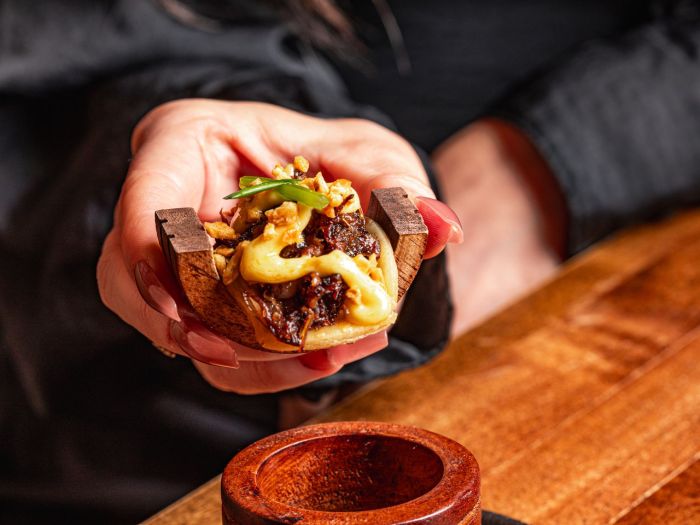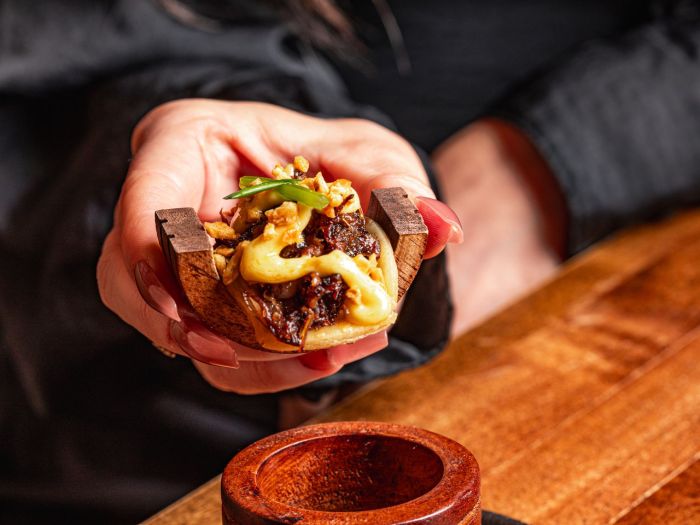Best time to visit Washington State? It depends! From the lush rainforests to the stunning coastlines, and vibrant cityscapes, Washington State offers diverse experiences throughout the year. This guide explores the ideal time for various activities, weighing weather, crowds, and costs to help you plan your perfect trip.
This comprehensive guide delves into the optimal times for outdoor adventures, city exploration, and experiencing the state’s renowned wineries and orchards. We’ll examine factors like weather, crowds, and costs, offering actionable insights to maximize your trip. We’ll explore the impact of festivals and events on your travel plans, helping you decide when to go based on your interests and priorities.
Introduction to Washington State
Washington State boasts a remarkable diversity of landscapes and climates, transitioning from lush rainforests to arid deserts and majestic mountains. This geographical variety creates unique experiences for visitors, offering opportunities for outdoor enthusiasts, city explorers, and those seeking tranquil retreats. The state’s diverse regions, each with its own distinct charm, attract millions of tourists annually, drawn to its natural beauty, cultural attractions, and vibrant urban centers.This overview details the major attractions and activities in different parts of Washington State, highlighting the typical weather patterns and providing a seasonal temperature and precipitation comparison for key locations.
This information will assist you in planning your visit to experience the beauty and unique character of each region.
Diverse Climates and Regions
Washington State’s varied topography contributes to its diverse climates. The state’s western side is heavily influenced by the Pacific Ocean, resulting in lush rainforests and mild, damp weather. The eastern side of the state transitions to drier, more continental climates, featuring rolling hills and expansive plains. The Cascade Mountain range divides the two, creating a dramatic shift in weather conditions.
The higher elevations of the mountains experience snowfall, while lower areas often see warmer temperatures. These differing climates lead to varied activities and experiences across the state, from hiking and camping in the mountains to exploring the coastlines and urban areas.
Major Tourist Attractions and Activities
Washington State offers a wide range of attractions and activities, catering to various interests. Seattle, the state’s largest city, is a major hub for culture, art, and commerce, with iconic landmarks like the Space Needle and Pike Place Market. The city’s vibrant waterfront offers opportunities for cruises and whale watching. Olympic National Park, on the state’s western coast, showcases stunning coastal scenery, rainforests, and rugged mountains, perfect for hiking, wildlife viewing, and exploring the diverse ecosystems.
Spokane, in eastern Washington, provides a more relaxed atmosphere, with museums, art galleries, and opportunities for outdoor recreation in the surrounding landscapes. These are just a few examples of the state’s many attractions, ensuring something for everyone.
Washington State’s stunning scenery is best enjoyed during the shoulder seasons, spring and fall. The vibrant wildflowers of spring and the crisp air of fall offer a perfect escape. Plus, if you’re looking for a great hotel deal, you should definitely check out the Hyatt Summer Lock Sale! hyatt summer lock sale It’s the ideal time to book your trip and take advantage of fantastic savings.
So, whether you’re aiming for wildflowers or foliage, these are wonderful times to plan a trip to Washington State.
Seasonal Weather Patterns
Washington State’s weather varies significantly across its regions and throughout the year. The Pacific Northwest experiences a distinct wet season, with higher rainfall, especially in the fall and winter months. The Cascade Mountains and higher elevations experience significant snowfall during winter. Eastern Washington, conversely, has more pronounced temperature changes, with warmer summers and colder winters. The state’s coastal areas generally maintain milder temperatures year-round, with cool summers and mild winters.
This wide range of weather conditions means that different regions and activities are best suited for different times of year.
Average Temperatures and Precipitation Comparison
| Location | Season | Average Temperature (°C) | Average Precipitation (mm) |
|---|---|---|---|
| Seattle | Spring (Mar-May) | 10-15 | 100-150 |
| Summer (Jun-Aug) | 15-20 | 75-125 | |
| Autumn (Sep-Nov) | 10-15 | 125-175 | |
| Spokane | Spring (Mar-May) | 5-15 | 50-100 |
| Summer (Jun-Aug) | 15-25 | 25-75 | |
| Autumn (Sep-Nov) | 5-10 | 75-125 | |
| Olympic National Park | Spring (Mar-May) | 8-13 | 150-200 |
| Summer (Jun-Aug) | 10-18 | 100-150 | |
| Autumn (Sep-Nov) | 8-13 | 150-200 |
Note: These are approximate averages and can vary depending on specific microclimates and elevation.
Best Time for Specific Activities: Best Time To Visit Washington State

Washington State boasts a diverse range of experiences, from the rugged mountains to the vibrant cityscapes and sun-drenched beaches. Understanding the best time to visit for specific activities is crucial to maximizing your trip. This section delves into the optimal seasons for hiking, whale watching, exploring Seattle, and enjoying the state’s renowned wineries and orchards.Planning your trip around the best time for your chosen activities ensures a more enjoyable and fulfilling experience.
The weather patterns, wildlife availability, and event schedules all contribute to the overall appeal of a visit.
Hiking and Outdoor Adventures in Mountains and Forests
The ideal time for hiking and outdoor adventures in Washington’s mountains and forests is typically during the spring and fall seasons. Spring offers pleasant temperatures, fewer crowds, and stunning displays of wildflowers. Fall brings crisp air, vibrant foliage, and fewer bugs. Summer can be hot and dry in some areas, increasing the risk of wildfires, while winter brings snow and icy conditions, making many trails inaccessible.
Whale Watching and Beach Activities on the Coast
Whale watching tours are most successful during the summer months, when migrating whales are present. The warmer weather and calmer seas also make beach activities like swimming, sunbathing, and surfing more enjoyable. However, keep in mind that the whale migration patterns can shift slightly depending on the year.
Experiencing the Vibrant City Life of Seattle
Seattle’s vibrant city life is enjoyable year-round, though the shoulder seasons (spring and fall) provide a delightful balance of pleasant weather and fewer crowds compared to peak summer. Seattle’s numerous festivals and events also make these seasons particularly attractive. Winter can offer a unique charm with the city’s holiday decorations and events.
Visiting Wineries and Orchards in Wine Country Regions
Washington’s wine country regions thrive during the summer months, offering pleasant temperatures and optimal conditions for outdoor activities. However, the fall season often yields the best fruit harvests, and visiting orchards at this time can offer a truly rewarding experience.
Best Months for Different Outdoor Activities
| Activity | Best Months | Reasoning |
|---|---|---|
| Hiking (Mountains/Forests) | May-June, September-October | Pleasant temperatures, fewer crowds, stunning scenery (wildflowers in spring, foliage in fall). |
| Whale Watching (Coast) | June-August | Migratory whale season, warmer weather, calmer seas. |
| Beach Activities (Coast) | June-August | Warmer temperatures, ideal for swimming, sunbathing, and surfing. |
| Seattle City Life | April-May, September-October | Pleasant weather, fewer crowds, festivals and events. |
| Wineries/Orchards | Summer (for wineries), Fall (for orchards) | Optimal conditions for outdoor enjoyment, fruit harvest in fall. |
Crowds and Costs

Washington State offers a diverse range of experiences, from stunning natural landscapes to vibrant cities. However, the best time to visit often depends on your tolerance for crowds and your budget. Understanding seasonal variations in crowds and costs is crucial for planning a trip that meets your expectations.
Washington State’s stunning scenery is best enjoyed during the spring and fall, when the weather is pleasant and crowds are smaller. Before you head out, though, make sure to check out some essential travel tips, like what not to pack in your carry-on bag. travel tips what not to pack in carry on will help you avoid baggage hassles.
Ultimately, the ideal time to visit depends on your tolerance for crowds and the kind of adventures you’re seeking.
Tourist Crowds
Tourist crowds fluctuate significantly throughout the year. Summer months, particularly July and August, see the highest influx of visitors, especially to popular destinations like Olympic National Park and the San Juan Islands. These peak seasons are characterized by larger crowds at attractions, potentially longer wait times, and higher demand for accommodations. Conversely, shoulder seasons (spring and fall) offer a more manageable balance between pleasant weather and fewer crowds, allowing for a more relaxed experience.
Winter months, while offering a unique charm with the possibility of snow-related activities, generally have fewer visitors, though some areas might see seasonal closures.
Accommodation Costs
Hotel and lodging prices vary greatly depending on the season. Peak summer months typically command higher prices due to increased demand. Shoulder seasons (spring and fall) often provide a more affordable alternative without sacrificing the quality of accommodations. Winter months, with fewer visitors, usually offer the lowest prices, particularly if you’re willing to book in advance. This is also influenced by the specific location; coastal areas and major cities will always have higher costs compared to smaller towns.
Activity Costs
The cost of activities in Washington State varies depending on the season and popularity of the attraction. Popular attractions like whale watching tours, hiking excursions, and museum visits tend to have higher prices during peak seasons. Shoulder seasons offer more favorable prices for these experiences, especially when you can avoid the most popular times to visit. Consider booking in advance for activities to potentially secure better deals.
Entrance fees to parks and national monuments also fluctuate depending on the time of year, but this is less pronounced compared to lodging.
Flight and Transportation Costs
Flight prices to Washington State are influenced by demand and seasonal variations. Summer months, especially during popular holiday weekends, tend to have higher flight prices. Shoulder seasons often provide more affordable options, and you might find cheaper flights if you’re flexible with your travel dates. Transportation costs within the state, such as rental cars and public transport, generally follow a similar pattern, reflecting the overall demand.
Average Prices for Attractions and Dining
Popular attractions and dining experiences in Washington often see price fluctuations tied to the season. During peak summer months, restaurants might have longer wait times and higher menu prices due to increased demand. In contrast, shoulder seasons often provide more competitive pricing and better dining experiences with less congestion. Keep in mind that specific locations and establishments can influence prices.
Estimated Costs Table
| Season | Accommodation (Avg. $ per night) | Food (Avg. $ per day) | Activities (Avg. $ per day) |
|---|---|---|---|
| Summer (June-August) | $200-$350 | $50-$75 | $50-$100 |
| Shoulder (Spring/Fall) | $150-$250 | $40-$60 | $40-$75 |
| Winter (December-February) | $100-$200 | $35-$50 | $30-$60 |
Note: Prices are estimates and can vary based on location, accommodation type, and specific activity choices.
Events and Festivals
Washington State boasts a vibrant calendar of events and festivals, attracting visitors from across the country and globe. These celebrations, from music to arts to cultural traditions, are a significant draw for tourists, often influencing the best time to visit and impacting local economies. Understanding these events and their timing can help travelers plan their trips to coincide with experiences that resonate with their interests.The sheer diversity of Washington’s events makes it a destination for all tastes.
From the bustling energy of a major music festival to the quiet contemplation of a fine arts exhibition, there’s an event for everyone. Knowing when these events take place can allow travelers to maximize their time and budget. These events also impact visitor volume and pricing, so careful consideration of these factors is crucial for a smooth and enjoyable trip.
Washington State’s beauty shines year-round, but spring and fall offer fantastic weather. Thinking about a trip to Morocco? For the best experiences in Marrakesh, check out the optimal travel times at best time to visit marrakesh. Ultimately, the best time to visit Washington State is when you can appreciate its diverse landscapes, from the lush forests to the stunning coastline.
Major Music Festivals
Washington State hosts a number of notable music festivals, particularly in the summer months. These events often feature a variety of genres, from indie rock to country to electronic dance music. The popularity of these festivals frequently leads to increased visitor numbers, potentially impacting lodging and dining costs. These events can attract a large crowd, potentially affecting travel and accommodation availability.
- Bumbershoot, Seattle: This multi-day music and arts festival typically takes place in late summer and attracts a huge number of attendees. High demand for tickets and accommodations often results in significant price increases during this period.
- Summerfest, various locations: While not exclusively a Washington State event, several locations host various summer festivals, adding to the overall summer event calendar. Their impact on visitor volume and pricing can vary greatly depending on the specific location and the festival’s popularity.
Arts and Cultural Celebrations
Washington State’s cultural events range from traditional celebrations to contemporary exhibitions. These events are often held throughout the year and offer a diverse range of artistic experiences. Attending a festival or celebration can enhance the overall experience of visiting Washington State.
- Seattle International Film Festival: Held annually in the spring, this film festival showcases a diverse range of films from around the world. The festival’s prestige often leads to a surge in visitor numbers, particularly from film enthusiasts.
- Seattle Cherry Blossom Festival: A spring tradition in Seattle, this festival celebrates the arrival of spring with a wide range of activities, including parades, parties, and cultural performances. The festival typically occurs in April or May and attracts a large number of visitors, influencing visitor numbers.
Impact on Visitor Numbers and Prices, Best time to visit washington state
The popularity of specific events directly correlates with the impact on visitor volume and prices. Events with high attendance often see a surge in demand for accommodation and dining, resulting in increased prices. The timing of these events, therefore, becomes a critical factor when planning a trip to Washington State.
Table of Major Events and Festivals
| Event | Dates | Potential Impact on Visitors |
|---|---|---|
| Bumbershoot | Late Summer | High visitor numbers, increased prices for accommodation and dining |
| Seattle International Film Festival | Spring | Increased visitor numbers, potentially higher prices for accommodation |
| Seattle Cherry Blossom Festival | April/May | Significant visitor numbers, potentially increased prices for accommodation and popular attractions |
Weather Considerations
Washington State’s diverse landscapes and varied microclimates mean that weather can significantly impact outdoor adventures and sightseeing plans. Understanding the typical weather patterns and potential for extreme events is crucial for planning a successful trip. From the Pacific Northwest’s famed rain to the drier eastern slopes, weather plays a key role in the overall experience.The state’s diverse geography, ranging from the Olympic Mountains’ lush forests to the arid Columbia River Basin, leads to substantial regional variations in weather conditions.
Coastal areas are generally cooler and wetter than the interior, while mountainous regions experience dramatic temperature swings and frequent snowfall. Knowing these regional differences is vital for choosing the best time to visit specific locations and activities.
Impact on Outdoor Activities
Weather conditions directly influence the enjoyment and safety of outdoor activities. Heavy rain can make hiking trails muddy and slippery, potentially dangerous. Snowfall can impact access to mountain trails and create challenging conditions for skiing and snowboarding. Hot temperatures can lead to heat exhaustion or other health issues, especially in areas with limited shade. Choosing the right time of year for specific activities can ensure a more enjoyable and safe experience.
Regional Variations
The weather patterns vary significantly across Washington State. The Olympic Peninsula, for instance, experiences a temperate rainforest climate with high rainfall year-round. The Cascade Mountains see dramatic temperature differences between the sunny slopes and the shaded valleys, as well as significant snowfall in the winter months. Eastern Washington experiences more sunshine and less rainfall, with hot summers and cold winters.
Extreme Weather Potential
Washington State is susceptible to various extreme weather events. Coastal areas can experience strong winds and heavy rain, potentially leading to flooding and other hazards. The Cascade Mountains face frequent snowfall and winter storms, impacting road closures and access to trails. Heatwaves can occur in the eastern regions during the summer months, requiring precautions for outdoor activities.
Understanding these possibilities allows visitors to plan accordingly and take necessary safety measures.
Average Temperatures, Rainfall, and Snowfall
The following table provides a general overview of average temperatures, rainfall, and snowfall for key locations in Washington State. Keep in mind that these are averages, and actual conditions can vary significantly.
| Location | Average Temperature (Summer) | Average Temperature (Winter) | Average Rainfall (Annual) | Average Snowfall (Annual) |
|---|---|---|---|---|
| Seattle | 60-75°F (16-24°C) | 35-45°F (2-7°C) | 38-48 inches (97-122 cm) | 10-20 inches (25-51 cm) |
| Spokane | 70-85°F (21-29°C) | 20-30°F (-7 to -1°C) | 20-30 inches (51-76 cm) | 40-60 inches (102-152 cm) |
| Tacoma | 65-75°F (18-24°C) | 30-40°F (-1 to 4°C) | 35-45 inches (89-114 cm) | 20-30 inches (51-76 cm) |
| Olympic National Park | 55-65°F (13-18°C) | 35-45°F (2-7°C) | 80-100 inches (203-254 cm) | 100-150 inches (254-381 cm) |
Weather Challenges for Outdoor Activities
This table summarizes potential weather challenges for outdoor activities in different seasons. It provides a framework for visitors to make informed decisions based on their chosen activities.
| Season | Potential Weather Challenges |
|---|---|
| Spring | Variable weather; rain showers; potential for flooding; cooler temperatures in the mountains; snow at higher elevations. |
| Summer | High temperatures, especially in the interior; potential for heatwaves; occasional thunderstorms; wildfire risks in some areas. |
| Autumn | Cooler temperatures; rain and wind; potential for landslides; foliage changes. |
| Winter | Snowfall; ice; freezing temperatures; road closures; limited visibility; potential for avalanches in the mountains. |
Overall Recommendations
Washington State offers a diverse range of experiences, from stunning natural landscapes to vibrant urban life. Choosing the best time to visit depends heavily on your priorities – whether you crave peak outdoor adventures, want to avoid crowds, or are looking for the best weather for specific activities. Understanding the trade-offs between seasons is key to planning a memorable trip.The optimal time to visit Washington State isn’t a one-size-fits-all answer.
Consider what you value most in a vacation: uninterrupted hiking, affordable prices, or fewer crowds. Each season presents unique opportunities and challenges. The key is to weigh the pros and cons against your personal preferences and tailor your trip accordingly.
Ideal Time to Visit Based on Interests
Different seasons excel at different activities. Spring and fall offer pleasant temperatures and fewer crowds, making them ideal for hiking, exploring parks, and enjoying the outdoors without the heat or overwhelming crowds of summer. Summer brings sunshine, warm temperatures, and opportunities for outdoor activities like swimming, boating, and festivals. Winter, while potentially colder, offers opportunities for skiing, snowboarding, and other winter sports.
Trade-offs Between Seasons
The trade-offs between seasons revolve around weather, crowds, and prices. Spring and fall offer pleasant temperatures, but outdoor activities might be limited by occasional rain or cooler temperatures. Summer offers warm weather, but expect higher prices and larger crowds. Winter offers snow activities but comes with colder temperatures and potentially limited accessibility. Understanding these trade-offs will help you make informed decisions.
Pros and Cons of Peak Seasons
Summer is a popular time to visit Washington, with many people looking to enjoy outdoor activities and the warm weather. However, this also translates to higher prices and larger crowds. Finding accommodations and popular attractions can be more challenging. Conversely, the lower crowds in the shoulder seasons (spring and fall) offer the opportunity to enjoy the state’s natural beauty with fewer people around.
But this means that certain outdoor activities may be less accessible depending on the weather.
Summary of Best Time to Visit Based on Priorities
For those prioritizing affordability and fewer crowds, the shoulder seasons of spring and fall are excellent choices. If your priority is warm weather and outdoor activities, summer might be ideal, but be prepared for higher costs and larger crowds. Winter, while offering unique winter sports experiences, may not be suitable for everyone due to the potential for colder temperatures and limited accessibility.
Seasonal Comparison Table
| Season | Pros | Cons |
|---|---|---|
| Spring (April-May) | Pleasant temperatures, fewer crowds, blooming flowers, lower prices | Occasional rain, some outdoor activities might be limited by weather |
| Summer (June-August) | Warm weather, ideal for swimming, boating, festivals, and outdoor activities | Higher prices, larger crowds, potential for heat |
| Fall (September-October) | Beautiful foliage, crisp air, fewer crowds than summer, lower prices than summer | Some outdoor activities might be limited by weather, potential for rain |
| Winter (November-March) | Ideal for skiing, snowboarding, and other winter sports, stunning snowy landscapes | Cold temperatures, limited accessibility for some activities, potentially fewer amenities open |
Closing Notes
Ultimately, the best time to visit Washington State is a personal choice. Consider your interests, budget, and tolerance for crowds when making your decision. This guide provides a framework to help you choose the perfect season for your unforgettable Washington adventure, balancing optimal experiences with your travel preferences. Whether you’re drawn to hiking, whale watching, or exploring the bustling cityscapes, this guide has you covered.
















 (Example Image Description: A line graph displays average monthly temperatures in degrees Celsius on the y-axis, and the number of tourists (in thousands or millions) on the x-axis. Distinct seasonal trends are apparent, with the warmest months coinciding with higher tourist volume. The graph also highlights the shoulder seasons with moderate temperatures and lower tourist numbers.)
(Example Image Description: A line graph displays average monthly temperatures in degrees Celsius on the y-axis, and the number of tourists (in thousands or millions) on the x-axis. Distinct seasonal trends are apparent, with the warmest months coinciding with higher tourist volume. The graph also highlights the shoulder seasons with moderate temperatures and lower tourist numbers.)


